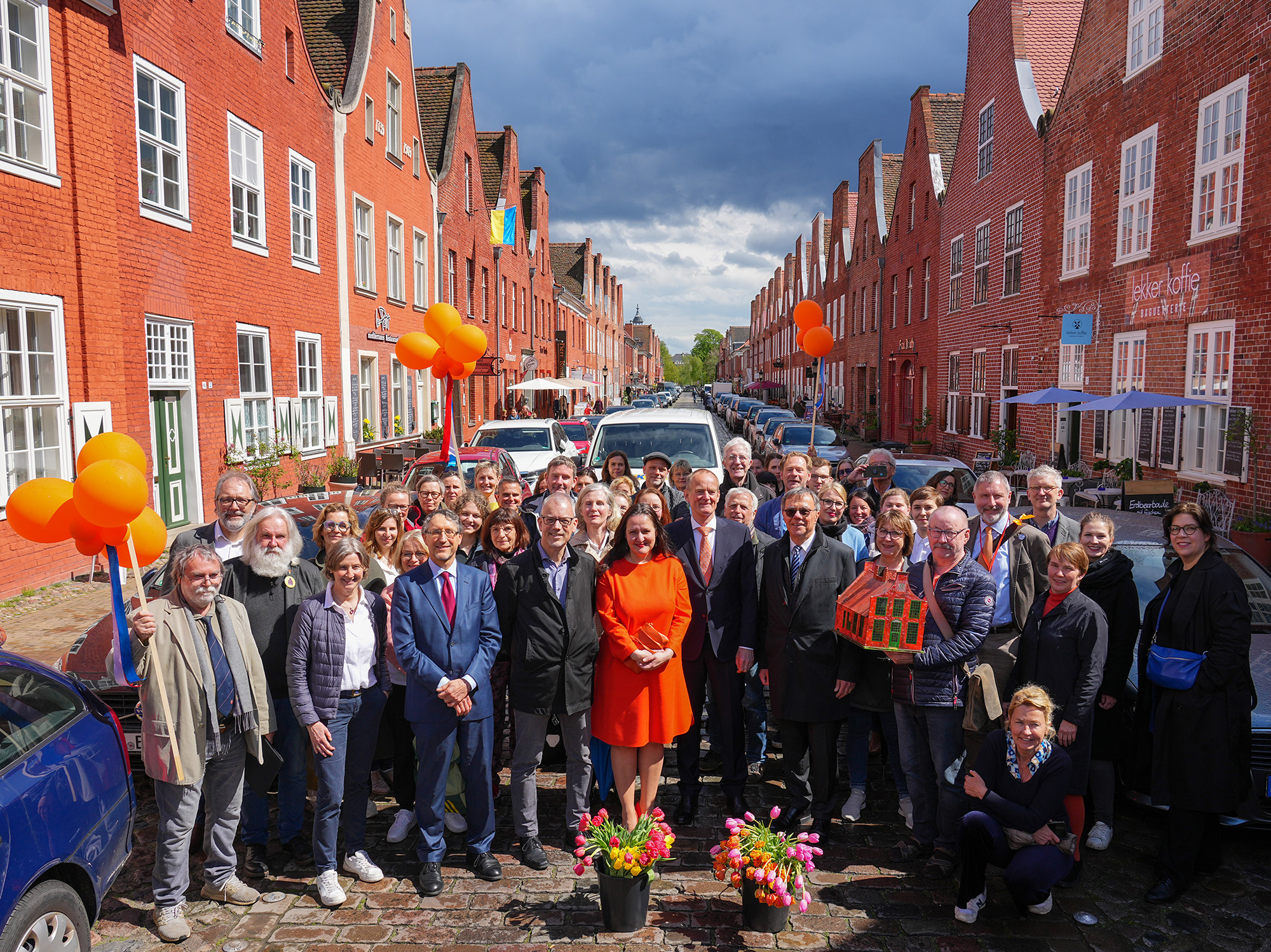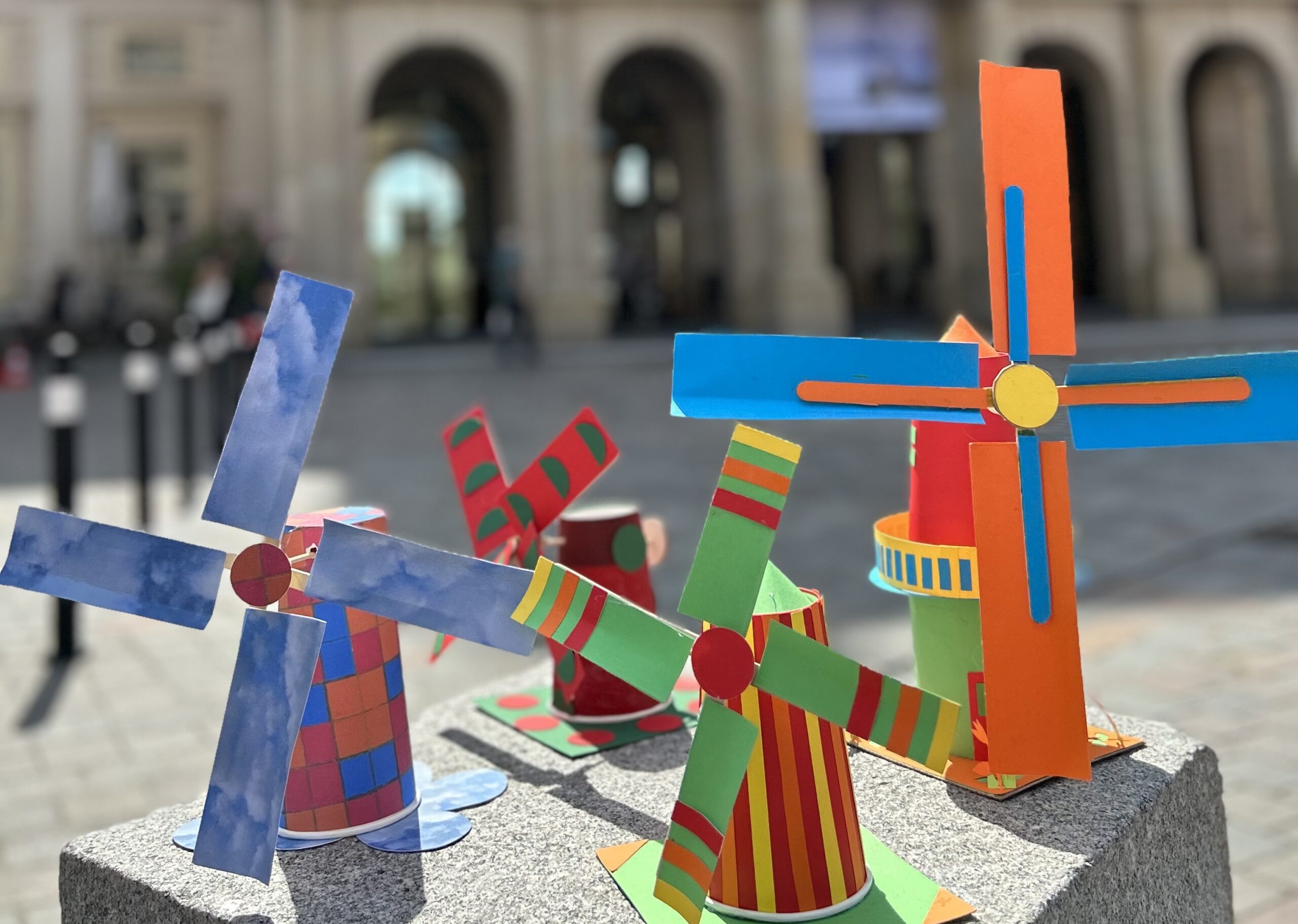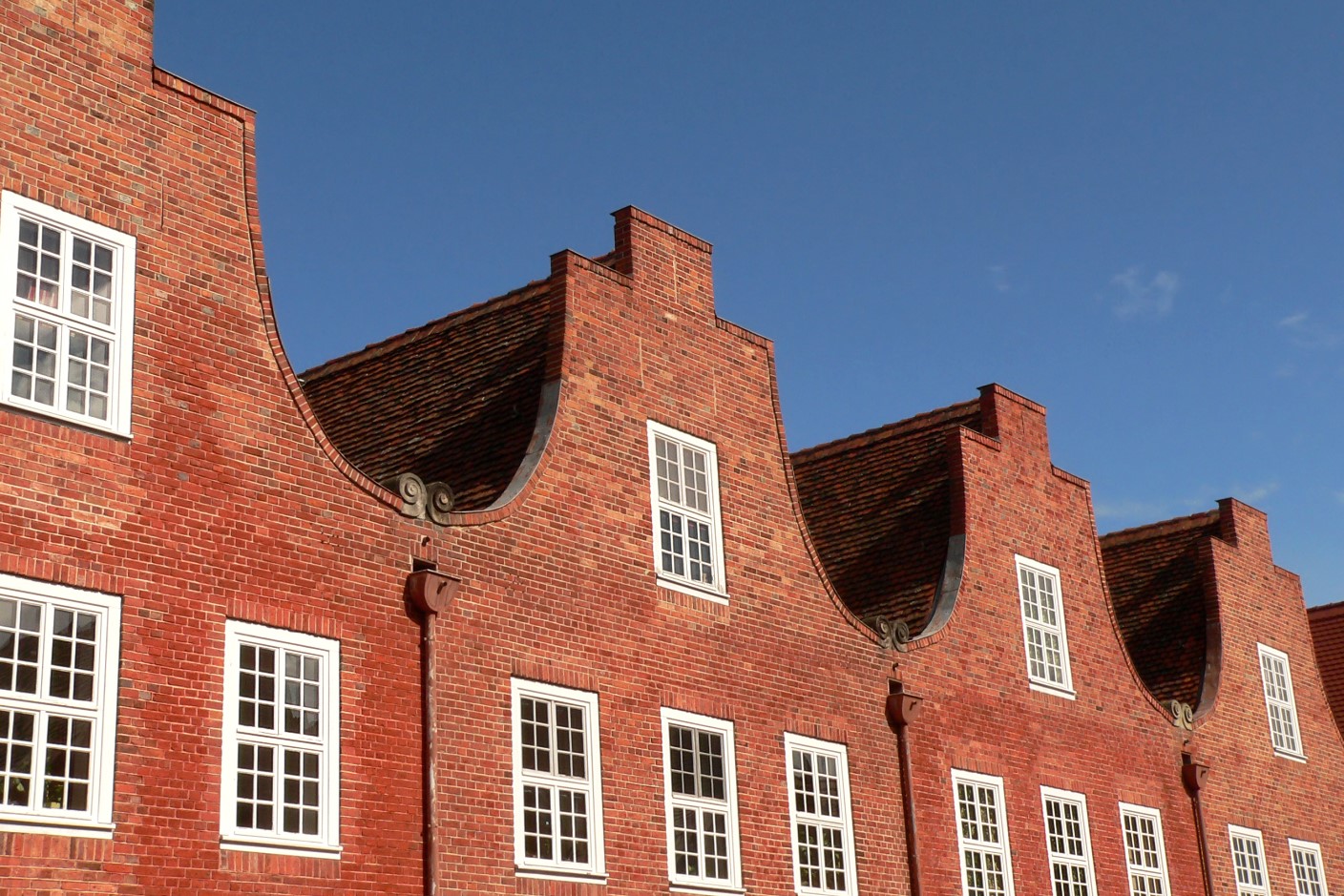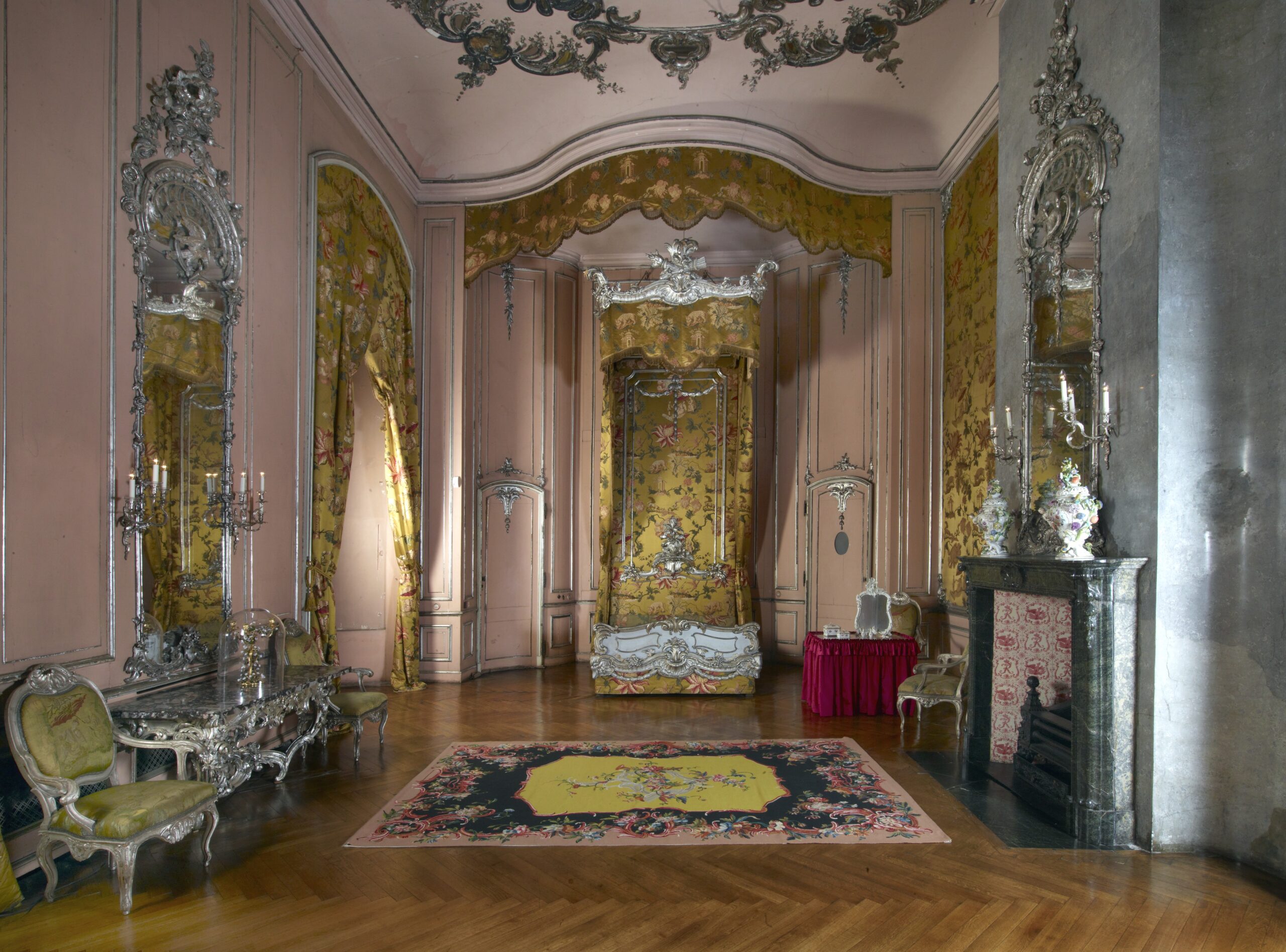
Fine silk in the New Palace
The New Palace in Sanssouci Park is regarded as the showcase window for Berlin-Potsdam silk production in the 18th century. Frederick II had this palace built 1763-1768 to accommodate his guests, decorating it almost exclusively with materials from local manufactories so that he could show off the high standard silk weaving had achieved during his reign.
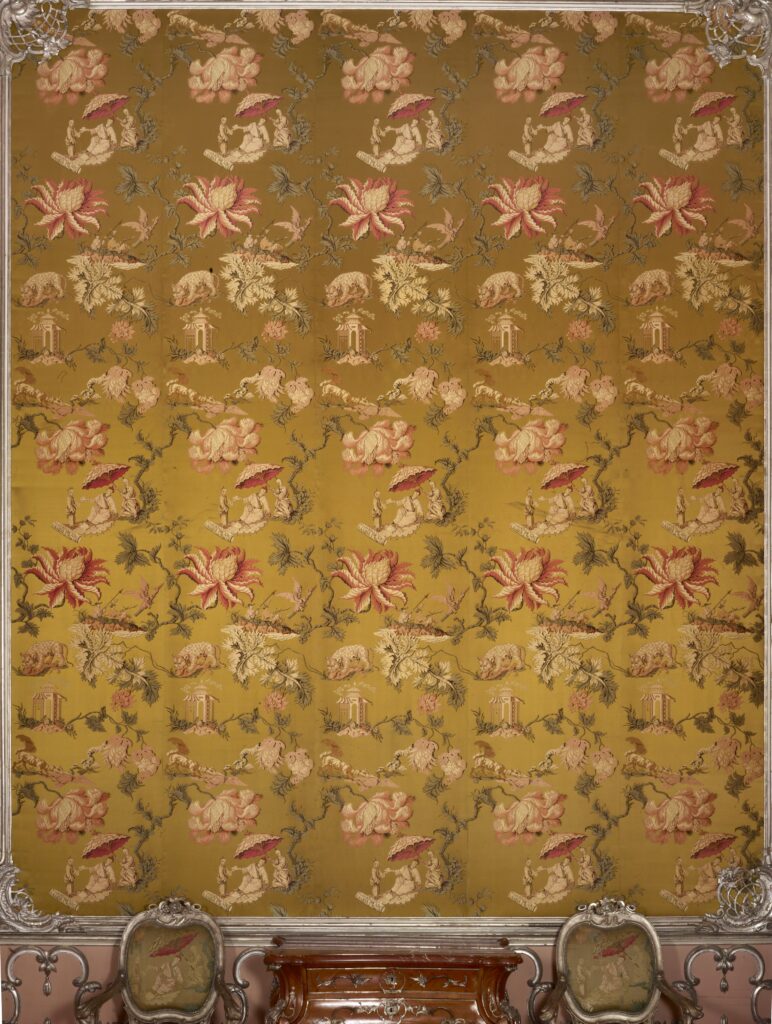
Only one of the many lavishly brocaded or painted silk weaves on the walls, windows, and furniture in the New Palace had not been created in Prussia: Namely, an atlas silk from Holland patterned with Chinese motifs. This particular atlas silk had been used in the bedchambers of the apartments of Prince Henry (fig. 1). The sequence of rooms for the brother of Frederick II and his consort is located on the ground floor in the left side wing at the New Palace. There, the wall coverings, curtains and furniture upholstery differ considerably from the other silks at the New Palace in terms of their patterns and the way they were woven.
Concerning its technique, the material has been more complexly woven than the Prussian silk décors. Also the width of the weave measuring 80 cm clearly differs from the regulations that applied to Berlin silk weaves, which prescribe 54 cm in width. Likewise, the very high pattern repetition of ca. 200 cm is extremely unusual for local weaves. The pattern (fig. 2) as well deviates from the rest of the brocaded fabrics in the palace, which otherwise display bands of lavish flower vines rising in waves. On a smooth ground of atlas silk, we find figural and plant motifs placed together here to form an asymmetrical pattern. In doing so, their sizes do not stand in any kind of natural relationship to each other. The figures, for example, are noticeably smaller than the plants.
The dominant group of figures consists of two Chinese holding a parasol above a man seated on the ground and serving him tea (fig.3). The crowning feature of this group is an oversized flower. In the scene above this, a foxlike creature with a pointed snout has grabbed a heron by the neck, which in turn, holds a dragonfly in its beak. Its head has already fallen prey to a caterpillar working its way out of a fantastical flower. The vine that belongs to the imaginary flower grows from a clod of earth, upon which a pavilion in the chinoiserie fashion stands with its characteristic roofs and bells. Again above this, a leopard seizes a deer.
Yet above this, staggered to the right, the last group of figures appears: Behind the raised stretch of shore, we see only the upper bodies of two hunters, one of whom sits astride a horse (fig. 4). Both hunters hold lances in their hands and seem to pursue a bird that has taken flight, which is too large in proportion. To the left above this, there is a large, striking flower that bears a certain resemblance to a thistle bloom. Leaves, identifiable as poppy leaves, are situated in dominating proportions beneath the group of hunters.
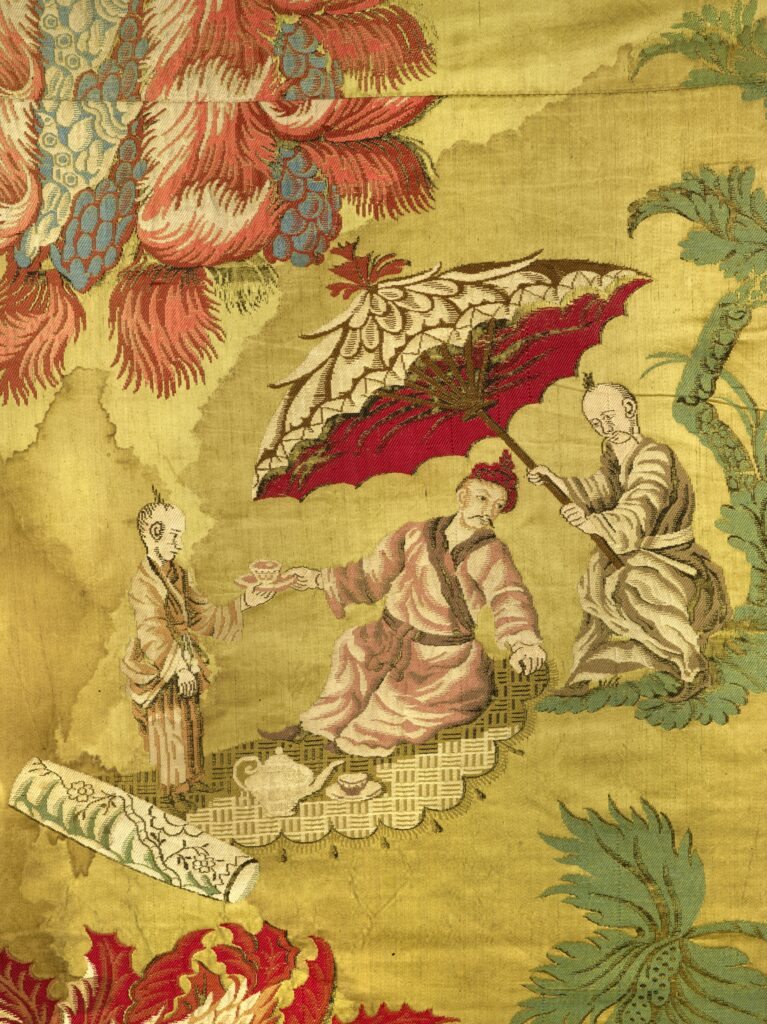
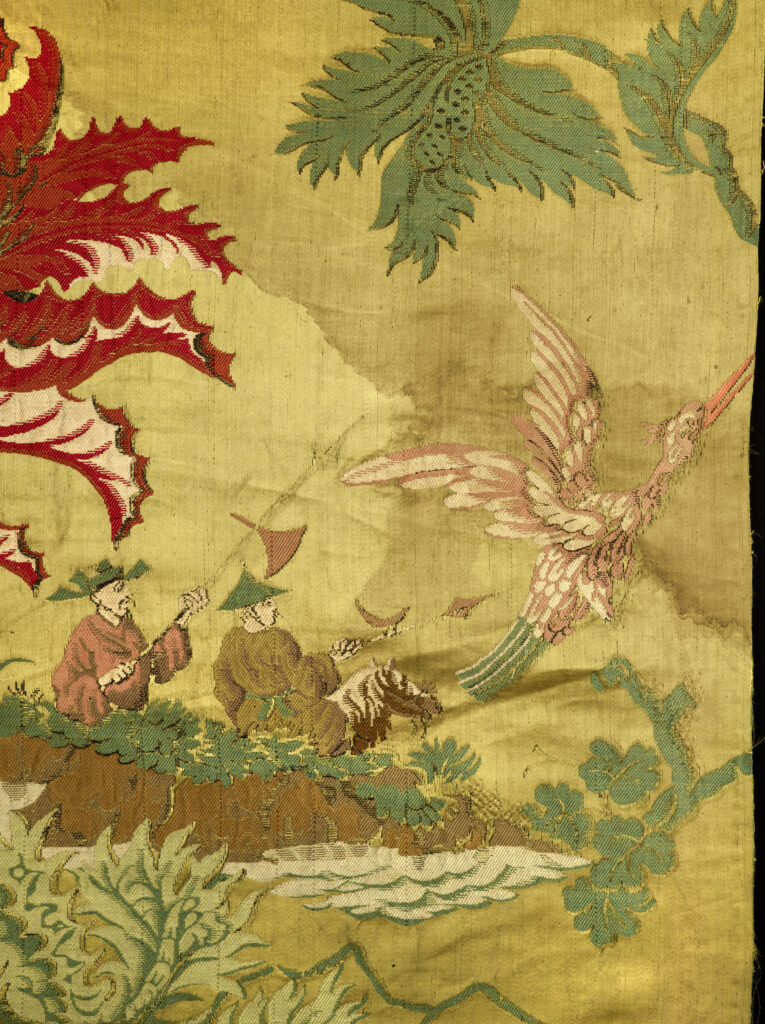
Room textiles with Chinese designs were widespread in the 18th century. For the most part, however, these were painted wallpapers from China, or European imitations of them. Woven chinoiseries, on the other hand, were rarer. Owing to their special technical features and remarkable pattern characteristics, the atlas silk at the New Palace belongs to a group of chinoiserie weavings that were created in Holland shortly before the mid-18th century. What these all have in common is that they do not display actual Chinese patterns, but are rather western adaptations. The patterns convey the European notions of China back then for which the individual motifs, well-known from Asian travel accounts and drawings, had been modified to fit the Rococo taste of the day.
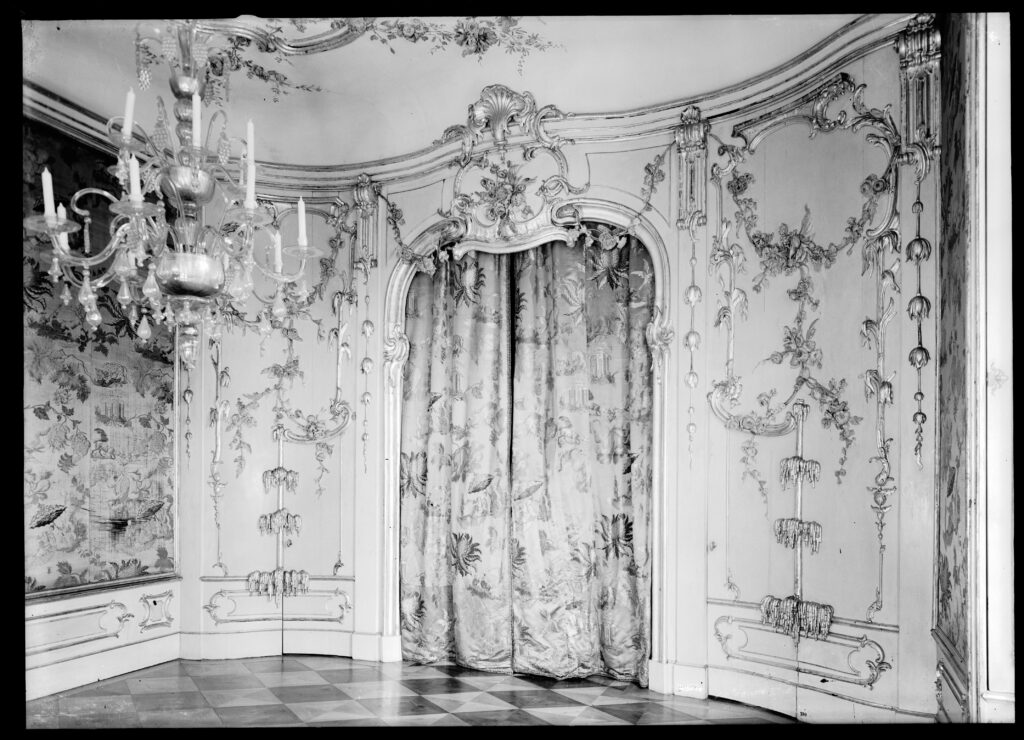
Archive materials identify the fabric as a “pavot with Indian figures”, which was imported from Holland by the silk manufacturers Girard and Michelet in 1768 at a price of 13 reichsthalers per ell. Most likely, it was called “pavot”, (the French word for poppy) because of the poppy flowers portrayed there. Since contemporaries were aware of the sleep-inducive effect of these plants, the use of this material seems fitting for a bedchamber. Between 1789 and 1810 the same fabric was also used in the bedchamber of the apartment for Prince Henry at Potsdam City Palace (fig. 5), where it was destroyed by fire in 1945. In the New Palace, its Dutch origin made it the only luxury import among all the silks in this palace, and thus, it was an outsider among the Friderician fabrics. The archives did not yield an explanation for exactly why the chinoiserie fabric was placed in the Potsdam apartments of Prince Henry. Possibly, this had been in keeping with the personal taste of this brother of Frederick II.
– Susanne Evers, Prussian Palaces and Gardens Foundation Berlin-Brandenburg

